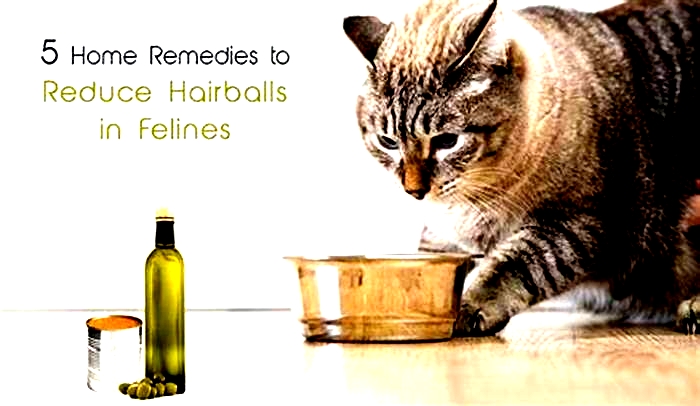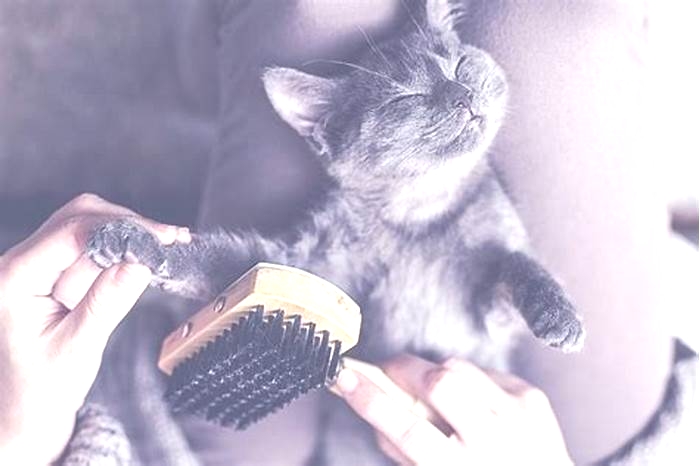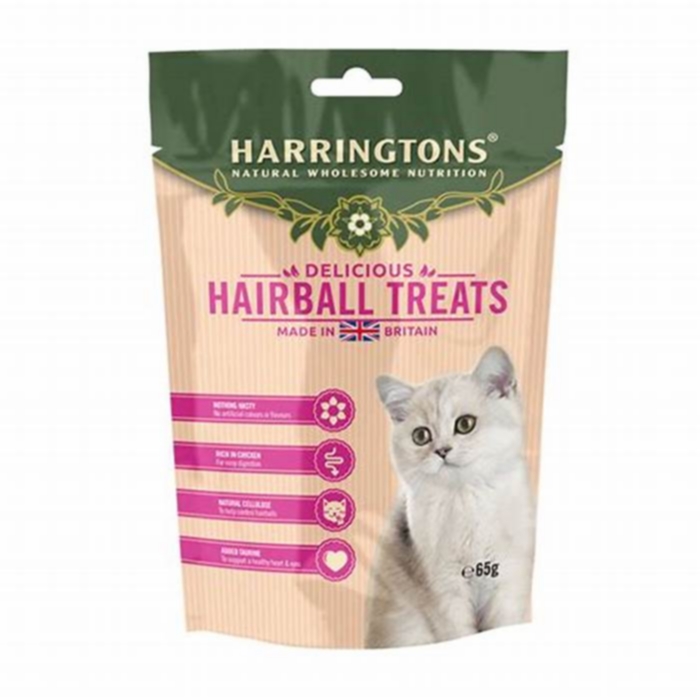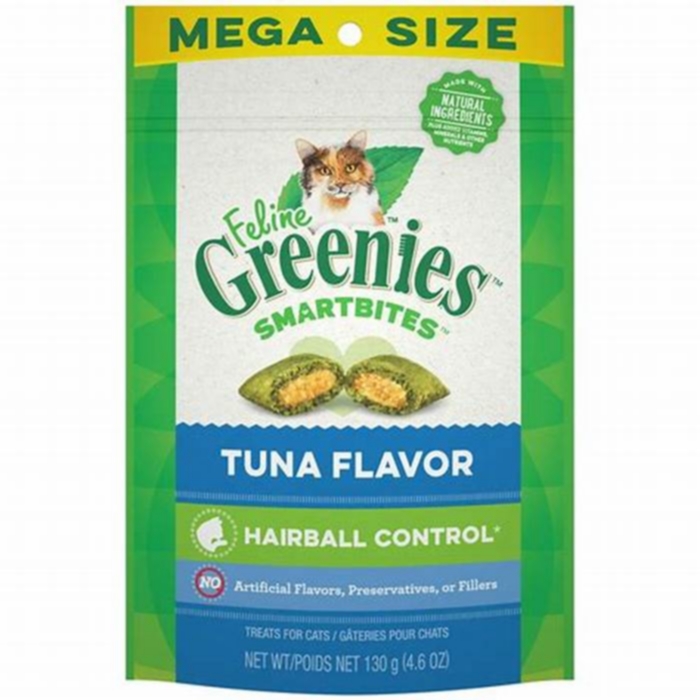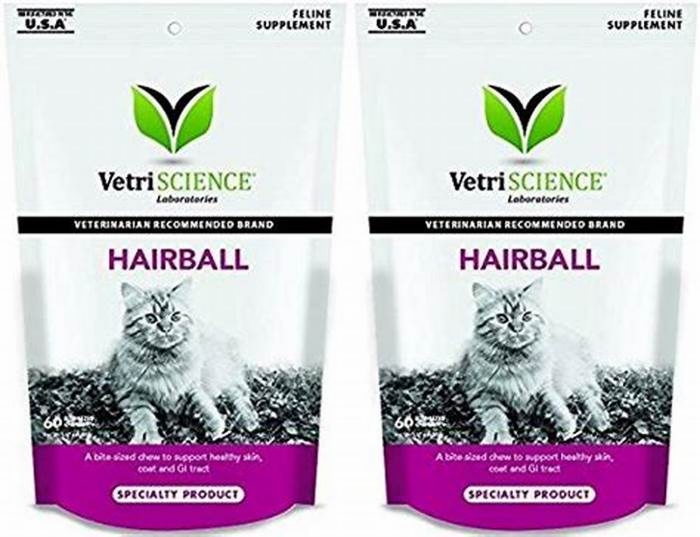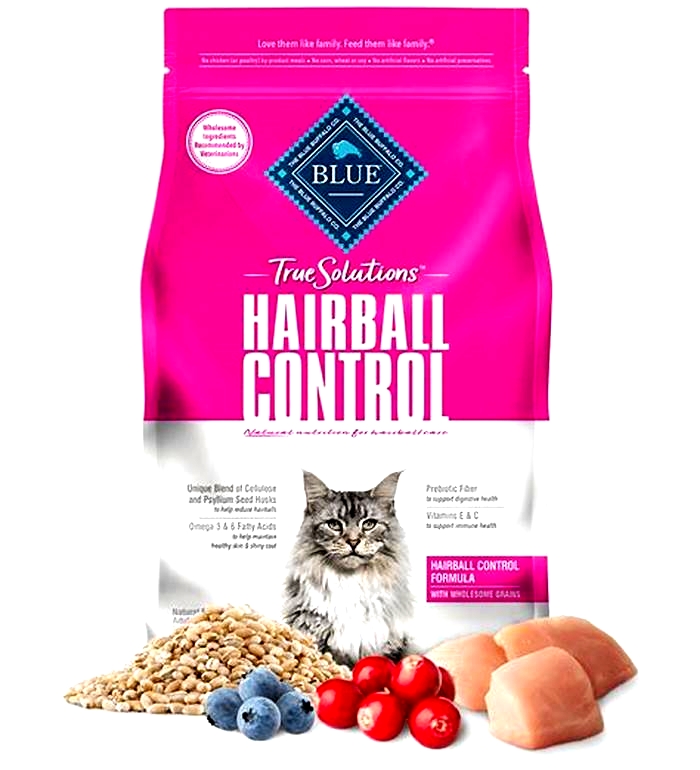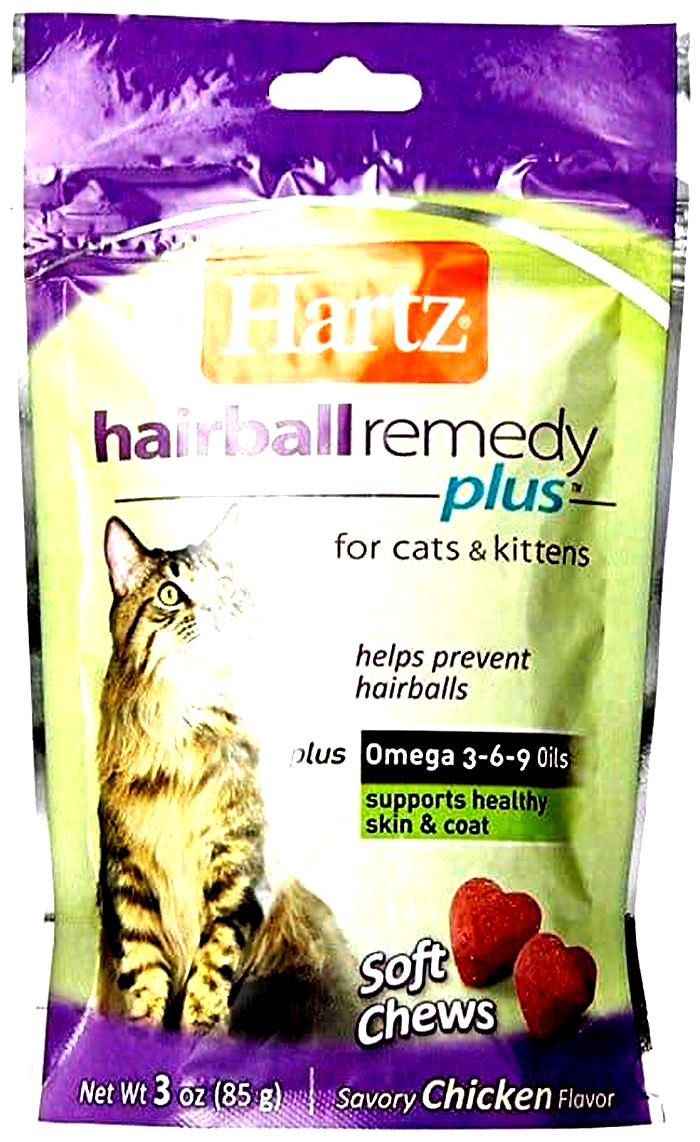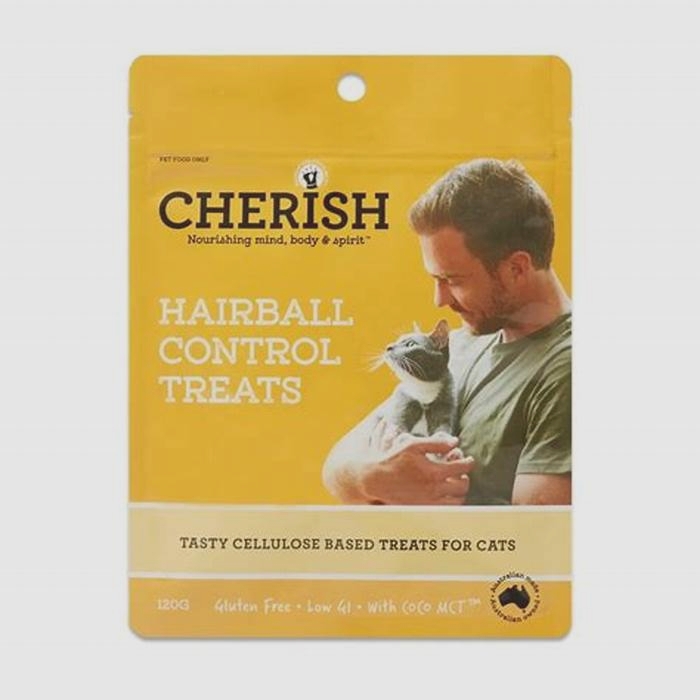Feline Health Essentials Understanding the Benefits of Hairball Control Treats
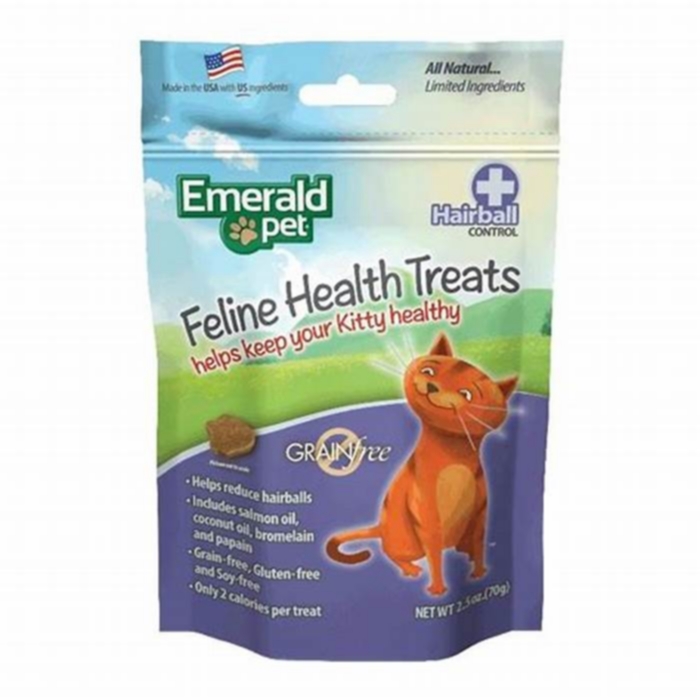
Unraveling the Mystery: How Hairball Control Cat Treats Really Work
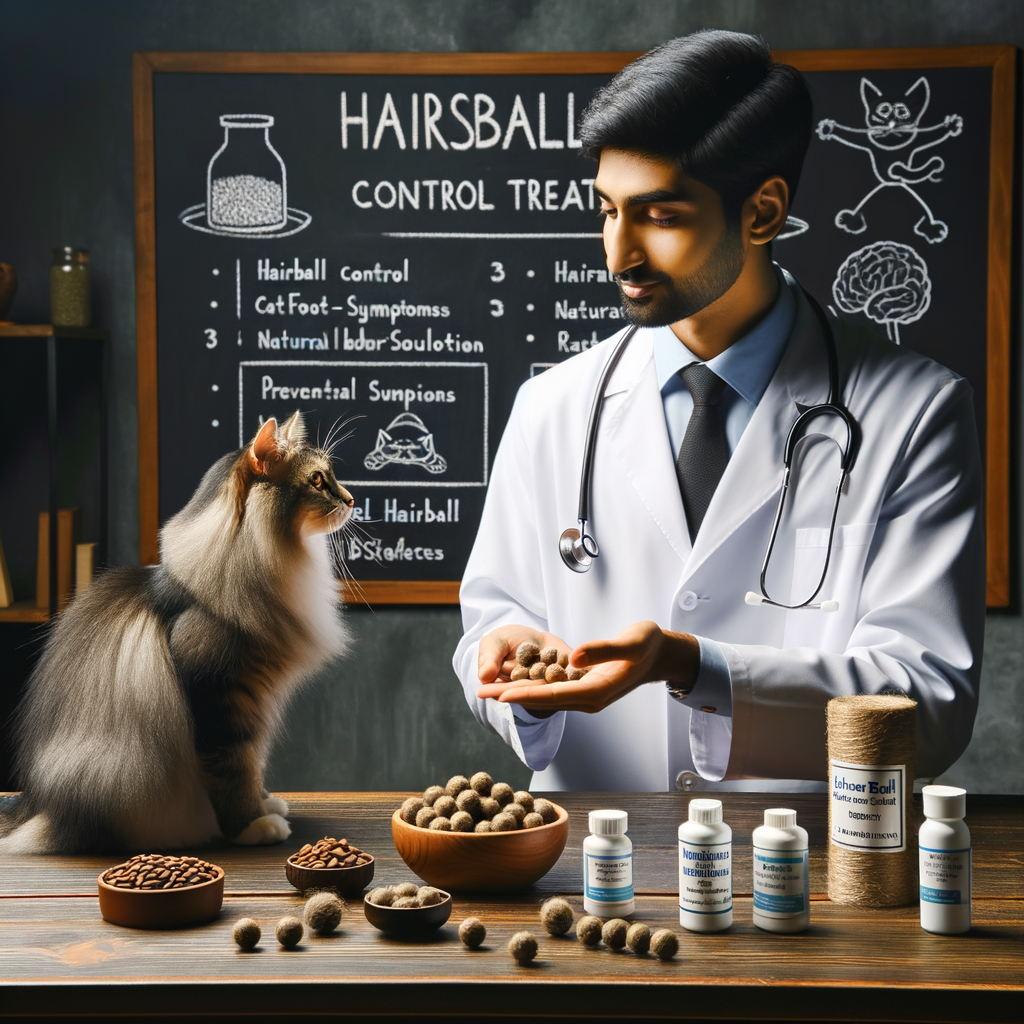
Introduction to Hairball Control for Cats
As a cat owner, you may have encountered a common problem that most felines face hairballs. This article aims to provide a comprehensive understanding of hairballs in cats and the importance of hairball control. Lets dive in to learn more.
- Understanding the problem of hairballs in cats
- The importance of hairball control
Cats are known for their grooming habits. They spend a significant portion of their day cleaning themselves with their tongues. While this keeps them clean, it also leads to the ingestion of fur. Most of this fur passes through the digestive system without any issues. However, sometimes, the fur can accumulate in the stomach, forming a hairball.
While occasional hairballs are not a cause for concern, frequent hairballs can lead to serious health issues such as intestinal blockages. This is why understanding the problem of hairballs in cats is crucial for every cat owner.
Now that we understand the problem, lets discuss why hairball control is important. Hairballs are not just unpleasant to deal with, but they can also cause discomfort and health issues for your cat. Regular vomiting can lead to dehydration, loss of appetite, and weight loss in cats. In severe cases, hairballs can cause blockages in the digestive system, which may require surgery to remove.
Therefore, hairball control is not just about keeping your home clean, but its also about ensuring the health and well-being of your feline friend. In the following sections, we will discuss various methods to manage and control hairballs in cats.
What are Hairballs?
When we talk about cats, one of the common issues that cat owners often encounter is hairballs. But what exactly are hairballs? Lets delve into this topic and understand more about it.
- Definition and causes of hairballs
- Cat hairball symptoms to watch out for
- Repeated unproductive retching or gagging
- Loss of appetite
- Constipation or diarrhea
- Lethargy or decreased activity
- A visible lump of hair in the cats feces
Hairballs, scientifically known as trichobezoars, are clumps of hair that accumulate in a cats stomach. When cats groom themselves, they often swallow loose hair. While most of this hair passes through the digestive system without any issues, some of it may stay in the stomach, forming a hairball.
Over time, these hairballs can become too large for the cat to digest, causing discomfort and other health issues. Factors that can increase the likelihood of hairball formation include long hair, frequent grooming, and certain health conditions that affect the cats ability to digest hair properly.
As a cat owner, its important to be aware of the signs that your cat may be dealing with a hairball. These symptoms include:
If you notice any of these symptoms in your cat, its important to consult with a vet. While hairballs are common and usually harmless, they can sometimes lead to serious health issues if not addressed promptly.
In the next section, we will discuss how to manage cat hairballs and the role of diet in hairball control. Stay tuned!
Managing Cat Hairballs
When it comes to managing cat hairballs, there are several remedies that cat owners can consider. These remedies can be classified into two broad categories: over-the-counter treatments and natural hairball remedies.
Hairball Remedies for Cats
Here are some of the most effective hairball remedies for cats:
- Over-the-counter treatments: Over-the-counter treatments are readily available at pet stores and veterinary clinics. These treatments often come in the form of pastes, gels, or chews, and are designed to help cats pass hairballs more easily. They contain ingredients that act as lubricants, making it easier for the cat to expel the hairball. Its important to follow the instructions on the packaging and consult with a vet if you have any concerns.
- Natural hairball remedies: For those who prefer a more natural approach, there are several home remedies that can help manage cat hairballs. One popular remedy is to add a bit of canned pumpkin to your cats food. Pumpkin is high in fiber, which can help move hairballs through the digestive system. Another option is to give your cat a bit of olive oil. The oil can help lubricate the digestive tract, making it easier for hairballs to pass. Always remember to introduce new foods gradually and in small amounts to avoid upsetting your cats stomach.
While these remedies can be effective, its important to remember that they are not a substitute for regular vet check-ups. If your cat is frequently coughing up hairballs, it could be a sign of a more serious health issue. Always consult with a vet if you have any concerns about your cats health.
Hairball Prevention in Cats
Preventing hairballs in cats is an essential part of their overall health and well-being. There are several effective strategies that can be employed to reduce the occurrence of hairballs in cats. Lets explore these in detail.
- Regular Grooming Practices
- Importance of Hydration
- Exercise and Play
Regular grooming is one of the most effective ways to prevent hairballs in cats. When you groom your cat, you help remove the loose hair that your cat would otherwise swallow during self-grooming. Brushing your cats fur daily can significantly reduce the amount of hair they ingest, thereby reducing the formation of hairballs. Its a good idea to start grooming habits when your cat is young to get them used to it.
Hydration plays a crucial role in preventing hairballs. Water helps keep a cats digestive system functioning smoothly, allowing ingested hair to pass through the digestive tract more easily. Encourage your cat to drink more water by providing fresh water daily or consider investing in a cat water fountain to stimulate their interest in drinking water. Wet food can also contribute to your cats hydration as it typically contains up to 80% water.
Regular exercise and play can help keep your cats digestive system active and healthy, which can aid in the prevention of hairballs. Engaging your cat in active play sessions can help stimulate their digestive system, allowing hair to pass through more easily. Try to set aside some time each day for interactive play with toys, laser pointers, or even a simple string.
In conclusion, hairball prevention in cats involves a combination of regular grooming, ensuring adequate hydration, and encouraging regular exercise and play. By incorporating these practices into your cats routine, you can help reduce the occurrence of hairballs and contribute to their overall health and happiness.
Role of Diet in Hairball Control
One of the most effective ways to manage hairballs in cats is through their diet. The right food can significantly reduce the frequency of hairballs and improve your cats overall health. Lets delve into the specifics of hairball control cat food.
Hairball Control Cat Food
Specialized cat food for hairball control is designed to help your furry friend pass hair through their digestive system more easily. This type of food usually contains a blend of specific ingredients that promote a healthy coat and minimize shedding.
- Benefits of Special Diet
- Ingredients to Look For
A diet specifically designed for hairball control can offer numerous benefits. First, it helps reduce the formation of hairballs by improving the health of your cats coat and reducing excessive shedding. Second, it aids in the digestion of hair, preventing it from clumping together in the stomach. Lastly, it can improve your cats overall digestive health, reducing the likelihood of constipation or other related issues.
When choosing a hairball control cat food, there are several key ingredients you should look for. Fiber is crucial as it helps move hair through the digestive system. Omega-3 and Omega-6 fatty acids contribute to a healthy skin and coat, reducing shedding. Additionally, look for food with high-quality protein sources, as protein is essential for maintaining a healthy coat. Lastly, ensure the food is free from artificial colors, flavors, and preservatives, as these can negatively impact your cats health.
In conclusion, the right diet plays a pivotal role in controlling hairballs in cats. By choosing a specialized cat food with the right ingredients, you can help your cat pass hair more easily and reduce the frequency of hairballs.
Cat Treats for Hairball Control
When it comes to controlling hairballs in cats, diet plays a significant role. One effective method is the use of specially designed cat treats. These treats are not just delicious snacks for your feline friends, but they also help in managing hairballs. Lets delve into how these treats work and how to choose the right ones.
- How these treats work
Cat treats for hairball control are formulated with a unique blend of ingredients. They contain dietary fibers that assist in the movement of hair through the cats digestive system. When your cat grooms itself, it swallows hair, which can form hairballs in the stomach. The fibers in these treats help to bind the hair together and facilitate its passage through the digestive tract, preventing the formation of hairballs.
Moreover, these treats often contain vitamins and minerals that promote a healthy coat, reducing excessive shedding and thus the amount of hair your cat ingests. Some treats also include lubricants that ease the passage of hairballs.
- Choosing the right treats
Choosing the right hairball control treats for your cat involves considering several factors. First, ensure the treats are made by a reputable manufacturer and contain high-quality ingredients. Look for treats that list dietary fiber as a primary ingredient.
Second, consider your cats preferences. Some cats may prefer crunchy treats, while others might enjoy chewy ones. The flavor is also a crucial factor. Most cats enjoy chicken, fish, or liver flavors.
Finally, remember to consider your cats overall diet and health. If your cat has specific dietary needs or health conditions, consult with your vet before introducing new treats. Its also essential to remember that treats should not make up more than 10% of your cats daily caloric intake.
In conclusion, cat treats for hairball control can be a beneficial addition to your cats diet. They work by aiding the passage of hair through the digestive system and can be chosen based on quality, your cats preferences, and dietary needs.
Case Study: Cat Hairball Treatment Success Stories
Lets dive into some real-life success stories of cat owners who have successfully managed their cats hairball issues. These cases will provide you with practical insights and may help you find the best solution for your furry friend.
Case 1: Using Natural Remedies
Meet Bella, a 5-year-old Persian cat. Bellas owner, Sarah, noticed her cat was frequently coughing up hairballs. After doing some research, Sarah decided to try a natural remedy. She began adding a teaspoon of canned pumpkin to Bellas food daily. Pumpkin is high in fiber and can help move hair through the cats digestive system.
After a few weeks, Sarah noticed a significant decrease in Bellas hairball incidents. This case shows that natural remedies can be an effective solution for hairball control.
Case 2: Success with Hairball Control Cat Food
Next, we have Max, a 3-year-old Maine Coon. Maxs owner, John, decided to switch Maxs diet to a hairball control cat food. This type of food is specially formulated to improve digestion and reduce hairball formation.
Within a month, John noticed that Max was coughing up fewer hairballs. This case demonstrates the potential effectiveness of hairball control cat food in managing hairball issues.
Case 3: Effectiveness of Cat Treats for Hairball Control
Finally, lets look at Daisy, a 2-year-old Siamese. Daisys owner, Lisa, decided to try hairball control treats. These treats are designed to help reduce hairball formation by improving digestion and helping to move hair through the digestive system.
After a few weeks of giving Daisy these treats, Lisa noticed a significant reduction in the number of hairballs Daisy was coughing up. This case illustrates how hairball control treats can be a tasty and effective solution for managing hairball issues.
These success stories highlight the effectiveness of different approaches to hairball control. Remember, every cat is unique, and what works for one may not work for another. Its important to monitor your cats response to any new treatment and consult with your vet if you have any concerns.
Hairball Control Tips for Cats
Managing hairballs in cats is a crucial part of their overall health and well-being. Here are some effective tips to help control hairballs in your feline friend:
- Regular Vet Check-ups
- Importance of a Balanced Diet
- Proper Grooming Techniques
Regular visits to the vet are essential for your cats health. A vet can provide professional advice on managing hairballs and can monitor your cats health to detect any potential issues early. They can also recommend specific treatments or changes in diet that can help reduce hairballs.
A balanced diet plays a significant role in controlling hairballs. Certain foods can help reduce the formation of hairballs. For instance, diets high in fiber can help move the hair through the cats digestive system. Additionally, there are special cat foods available that are specifically designed to control hairballs. Always consult with your vet before making any significant changes to your cats diet.
Regular grooming is another effective way to control hairballs. Brushing your cats fur regularly can help remove loose hair before your cat has a chance to swallow it. This can significantly reduce the amount of hair that ends up in your cats stomach, thereby reducing the formation of hairballs. There are various grooming tools available, like brushes and combs, that are designed specifically for cats.
In conclusion, controlling hairballs in cats involves regular vet check-ups, a balanced diet, and proper grooming. By following these tips, you can help ensure your cats health and happiness.
Conclusion: Unraveling the Mystery of Hairball Control
As we reach the end of our journey into the world of hairball control, its important to revisit the key points weve learned. Understanding and managing cat hairballs is not as daunting as it may seem. With the right knowledge and tools, you can ensure your feline friend leads a comfortable and hairball-free life.
- Key takeaways
- Hairballs are a common issue in cats, caused by their grooming habits.
- A balanced diet plays a crucial role in hairball control. High-fiber foods can help pass hairballs through the digestive system.
- Regular grooming can significantly reduce the amount of hair your cat ingests, thus reducing the formation of hairballs.
- There are successful case studies of cat owners managing hairballs effectively with the right diet and grooming practices.
- Final thoughts on managing cat hairballs
Lets recap the most important insights from our discussion:
Managing cat hairballs is all about being proactive. Regular grooming and a balanced diet are your best defenses against hairballs. Its also important to monitor your cats behavior for any signs of discomfort or changes in eating habits. Remember, while hairballs are common, they should not be a frequent occurrence. If your cat is frequently coughing up hairballs, consult with a veterinarian to rule out any underlying health issues.
In conclusion, hairball control is an essential part of cat care. With the right knowledge and practices, you can ensure your cat lives a comfortable and healthy life. Remember, every cat is unique, so what works for one might not work for another. Always consult with a professional when in doubt. Heres to a hairball-free future for your feline friend!

